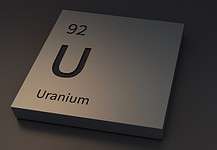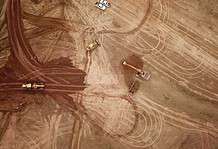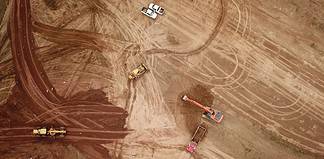After completing a $589 million upgrade Glencore’s Ernest Henry Mining, has continued its support for local and regional projects near its operations.
By Cameron Drummond
ERNEST HENRY is a copper and gold mining and processing operation 38km north east of Cloncurry in north-west Queensland. The mine is a part of Glencore’s portfolio of Australian copper assets which includes the Mount Isa Mines copper operations, a copper refinery in Townsville and the CSA underground copper mine near Cobar, NSW. Mined copper and gold at Ernest Henry is processed at its on-site concentrator then transported to Glencore’s Mount Isa copper smelter and refined at the Townsville refinery, ready to be delivered to domestic and overseas customers.
In its 2015 annual report, Glencore earnings before taxes, depreciation and amortisation of $US8.7bn; a 32 per cent drop compared to 2014. “We rapidly put in place a plan to address these concerns, culminating in the $10.2 billion debt reduction plan announced in September [2015 with] further measures announced in December,” Glencore chief executive Ivan Glasenberg said. “In total, the initiatives announced are expected to support our end 2016 net funding and net debt targets of [between] $US32bn – $US33bn and $US17bn – $US18bn respectively, which remain on track.”
Ernest Henry underground
Ernest Henry began commercial production in March 1998 as an open pit mine which was completed in 2011, with close to 700 million tonnes of material mined throughout its life. The completed open pit mine was 1.5km by 1.3km across at its widest points and 530m deep. In 2009, with the open pit nearing the end of its life, Glencore announced a five-year investment of $589 million to transition to underground shaft mining.
Upon open pit completion in 2011, the company commenced trucking ore from underground via a decline at rates of around three million tonnes of ore per annum, producing about 25,000t of copper and 35,000oz of gold each year. Glencore’s North Queensland Copper chief mining officer Matt O’Neill said commissioning the shaft was the ultimate milestone for the life of mine extension project. “Nearly two and a half years later, we hoisted our first ore from underground via our [one] kilometre-deep shaft,” he said.
With the completion of the project in 2014, Ernest Henry achieved its production forecast to produce 50,000t of copper and 70,000oz of gold per annum over an extended mine life to 2026. “We successfully ramped up to our planned production rates of 6 million tonnes of ore per annum in 2015 and we’re on track to continue meeting our production forecasts,” Mr O’Neill said. The shaft underground mine project consisted of more than 50km of development, with the construction of a primary crusher and 1.2km long conveyor system to transport ore to and from a 75 metres high hoisting system at 1000tph to a concentrator for processing.
“Our focus now is to keep improving our productivity in the mine, optimising systems and processes to ensure we’re performing as efficiently as we can in all areas. “We utilise an innovative sub-level caving mining method, a relatively new and lower cost method of mining that requires particular ground and environmental conditions. “We will mine 16 levels in total over the life of the mine and have already completed three levels, with three more in production and another two in development. “Large scale caving operations like this aren’t common, so to be involved in the production ramp up and initial stages of our underground mine has been a great and rare opportunity for our workforce,” he said.

Glencore’s North Queensland Copper chief mining officer Matt O’Neill.
Community funding
Glencore planned to invest close to $1.2 million in 2016 through its Glencore Community Program North Queensland (GCPNQ) in support of projects and initiatives that benefit regions where it operates in QLD. Eight new partnerships were awarded funding and four existing partnerships were set to continue receiving support under the program.
The company had flagged continuing projects for 2016 including its ‘Books in Homes’ literacy and reading program; support for RACQ LifeFlight Rescue; the construction of worker accommodation at Laura Johnson Home in Mount Isa; and funding for a Cloncurry Police and Citizens Youth Club’s (PCYC) youth and community engagement coordinator. GCPNQ funding was devised to enable the Mount Isa PCYC to deliver a youth support and vocational training program to influence the behaviour and attitude of participants, reduce their involvement in the criminal justice system and engage them in further education and employment.
Under Glencore, Ernest Henry has provided a range of community focused funding for projects in the Cloncurry region over the years, most recently with the opening of a second sports field at the Cloncurry Recreation Grounds on 23 July. The field included lighting and electrical upgrades, replacement of soil, installed irrigation and improvements to kiosks and amenities providing additional capacity for existing groups together with the opportunity for new clubs and activities to commence.

Left to Right: Glencore’s North Queensland Copper Assets chief operating officer Mike Westerman, former Cloncurry residents Vonney and Eddie Lee, Cloncurry Mayor Greg Campbell and government advisor Kelly Wilson.
Ernest Henry contributed $250,000 to the Cloncurry Shire for the project with the State Government adding another $100,000. At its opening, Glencore’s North Queensland Copper Assets chief operating officer Mike Westerman said he was pleased to be able to support the delivery of another important piece of community infrastructure in Cloncurry. “Our most recent community attitudes survey told us local people want improved community services and facilities with a focus on infrastructure along with youth development opportunities to ultimately improve liveability and quality of life,” Mr Westerman said.
While market conditions remained challenging, Mr Westerman said Glencore was committed to playing an active role in local communities and supporting ongoing development. “Funding is directed towards projects and initiatives that support the priorities and needs of our communities, with an emphasis on capacity building and sustainable outcomes,” he said. By the end of July, Glencore had invested more than $550,000 of annual funding to support projects and initiatives for the Cloncurry community.








































